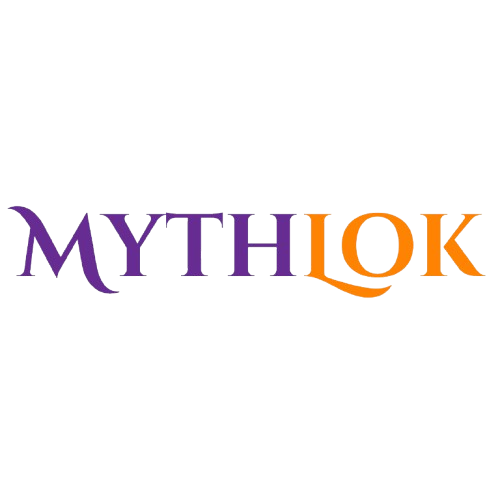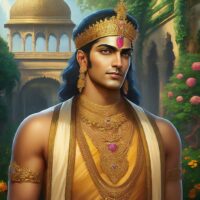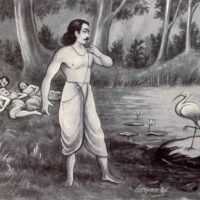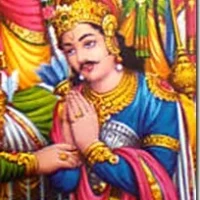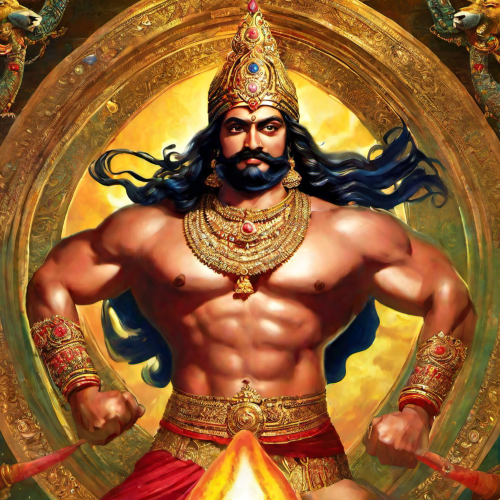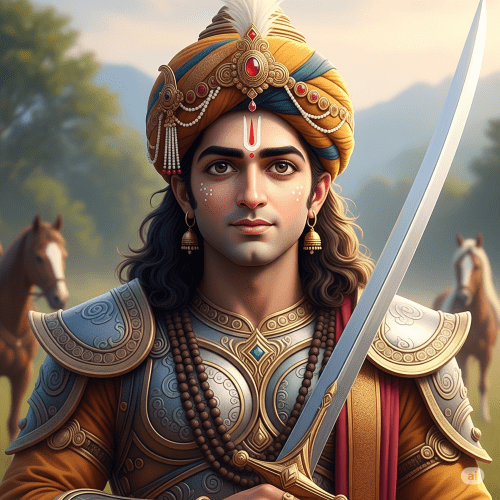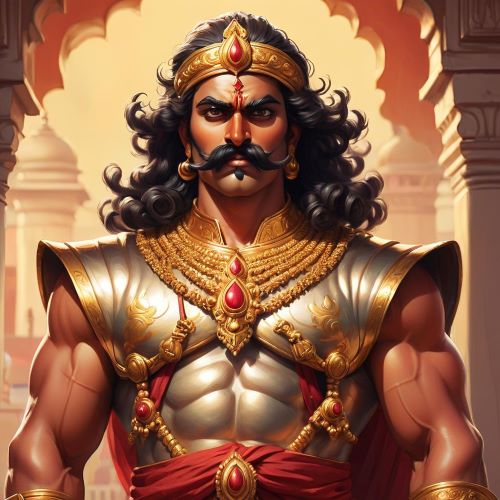Yudhishthira : The Righteous King
Listen
At a glance
| Description | |
|---|---|
| Origin | Indian Mythology |
| Classification | Demigods |
| Family Members | Pandu (Father), Dharma (Father), Kunti (Mother), Draupadi (Wife), Arjuna, Bhima, Nakula, Sahadeva |
| Region | India |
| Associated With | Dharma, Warfare, Royalty |
Yudhishthira
Introduction
Yudhishthira, often referred to as Dharmaraja or the King of Dharma, is a central figure in the Indian epic, the Mahabharata. Known for his unwavering adherence to righteousness and moral values, Yudhishthira exemplifies the principles of duty, honor, and justice in Hindu mythology. He is the eldest of the five Pandava brothers, considered the epitome of righteousness and dharma (duty) in Indian mythology. Yudhishthira played a pivotal role in the epic Mahabharata, embodying virtue and unwavering adherence to righteousness.
Physical Traits
The Mahabharata provides sparse details about Yudhishthira’s physical appearance. However, interpretations and artistic depictions generally portray him as tall and fair-skinned, exuding a regal presence. His dark, expressive eyes are often cited as windows to his wisdom and inner strength. Described as possessing a serene countenance and noble appearance, Yudhishthira’s dignified demeanor reflects his royal lineage and moral stature. Despite not being inclined towards warfare, his inner strength surpasses physical prowess, commanding respect through wisdom and compassion.
Family
Yudhishthira, the eldest son of King Pandu and Queen Kunti, holds a pivotal role in the Mahabharata as the leader of the Pandavas. His brothers—Bhima, Arjuna, Nakula, and Sahadeva—are integral figures in the epic. Yudhishthira’s wife, Draupadi, is shared among the brothers due to a unique circumstance in the epic. Born to Kunti and fathered by Yama, the god of death and dharma, Yudhishthira’s upbringing under his mother and their uncle King Dhritarashtra, the blind king of Hastinapura, shaped his destiny. His marriage to Draupadi, the fiery princess of Panchala, was part of a distinctive polyandrous ceremony that intertwined their destinies.
Other names
Yudhishthira, central to the Mahabharata, is known by several names that reflect his virtues and roles: Dharmaraja signifies his unwavering commitment to righteousness, Ajatashatru highlights his noble character as one without enemies, and Pandava denotes his membership in the esteemed Pandava brothers. Kuntiputra honors his mother Kunti, while Kaunteya acknowledges his maternal lineage, and Dharmaputra emphasizes his virtuous nature as the “Son of Dharma.” Each epithet underscores different aspects of Yudhishthira’s persona and contributions to the epic narrative.
Powers and Abilities
Yudhishthira’s prowess lies not in supernatural abilities or physical strength like his brothers, but in his unmatched wisdom, moral fortitude, and leadership acumen. Blessed by Yama with divine knowledge of dharma, he is revered for his ability to make righteous decisions and navigate moral complexities. Yudhishthira’s unwavering truthfulness, a hallmark of his character, often led him through both prosperous and challenging times. His governance skills, diplomacy, and steadfast adherence to righteousness define him as a revered leader in the Mahabharata, sought after for counsel by gods and sages alike.
Yudhishthira’s life was marked by trials and tribulations. His cousin Duryodhana, the eldest son of Dhritarashtra, harbored immense jealousy towards the Pandavas. Through a rigged game of dice, Duryodhana and his Kaurava clan cheated the Pandavas out of their kingdom and forced them into exile for thirteen years. During this period, Yudhishthira’s unwavering commitment to dharma and his ability to lead his brothers through hardship became legendary.
After their exile, the Pandavas sought to reclaim their kingdom but were met with refusal by the Kauravas. This ultimately led to the epic Kurukshetra war, a brutal conflict that lasted eighteen days and resulted in the decimation of both sides. Throughout the war, Yudhishthira faced agonizing choices, torn between his desire for justice and his aversion to bloodshed.
After the war’s conclusion, Yudhishthira was crowned king. However, his trials were not over. As a final test of his dharma, Yudhishthira was forced to travel to heaven with a dog by his side. Upon reaching the pearly gates, he was denied entry for abandoning the loyal canine companion. It was then revealed that the dog was Yama himself, disguised to test Yudhishthira’s unwavering adherence to dharma, even in the face of illogicality.
Modern Day Influence
Yudhishthira’s impact spans across literature, media, and moral philosophy, resonating in various interpretations and adaptations in modern times. The timeless epic of the Mahabharata continues to inspire works of literature, theater, and television, keeping Yudhishthira’s character alive in popular culture. His unwavering commitment to truth and righteousness serves as a moral compass globally, influencing ethical conduct and leadership principles in fields from politics to business ethics. Yudhishthira’s legacy extends beyond religious texts, depicted in Indian art, literature, and theater, and his story remains a poignant reminder of the enduring relevance of truth, justice, and ethical governance in contemporary society.
Related Images
Frequently Asked Questions
What is lorem Ipsum?
I am text block. Click edit button to change this text. Lorem ipsum dolor sit amet, consectetur adipiscing elit. Ut elit tellus, luctus nec ullamcorper mattis, pulvinar dapibus leo.
What is lorem Ipsum?
I am text block. Click edit button to change this text. Lorem ipsum dolor sit amet, consectetur adipiscing elit. Ut elit tellus, luctus nec ullamcorper mattis, pulvinar dapibus leo.
What is lorem Ipsum?
I am text block. Click edit button to change this text. Lorem ipsum dolor sit amet, consectetur adipiscing elit. Ut elit tellus, luctus nec ullamcorper mattis, pulvinar dapibus leo.
What is lorem Ipsum?
I am text block. Click edit button to change this text. Lorem ipsum dolor sit amet, consectetur adipiscing elit. Ut elit tellus, luctus nec ullamcorper mattis, pulvinar dapibus leo.
What is lorem Ipsum?
I am text block. Click edit button to change this text. Lorem ipsum dolor sit amet, consectetur adipiscing elit. Ut elit tellus, luctus nec ullamcorper mattis, pulvinar dapibus leo.

